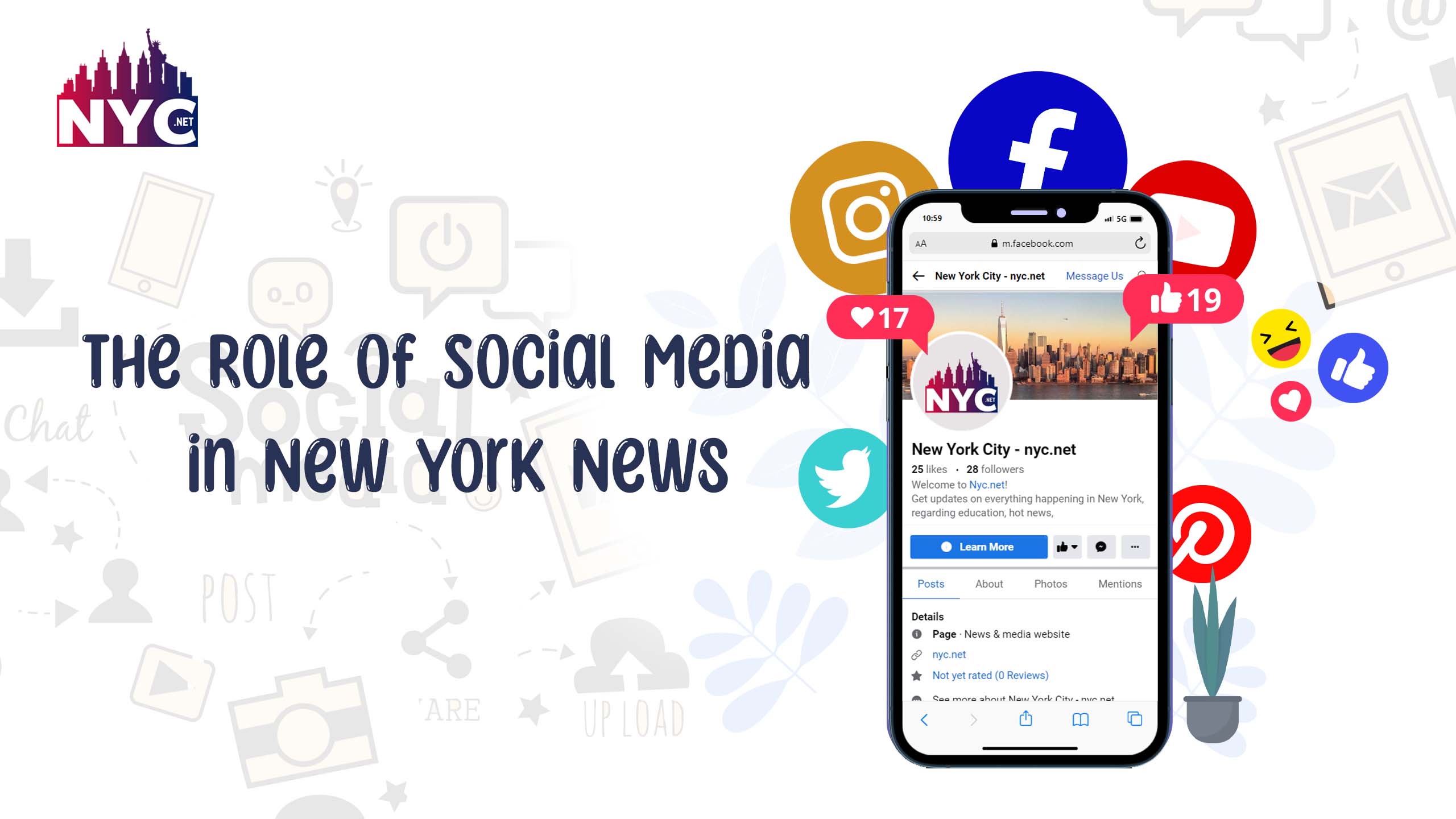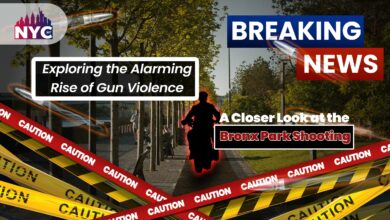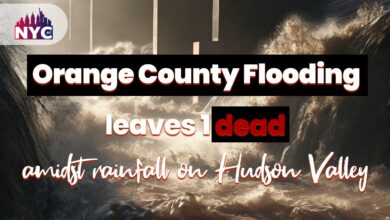The Role of Social Media in New York News: The Pros and Cons

Social Media in New York News
The Role of social media in New York News is undeniably huge. Everywhere you go, everywhere you see, social media has the world tight in its claw. The grip holds it has worldwide are only ever getting stronger.
Moreover, Social media has become an integral part of our lives and has played a crucial role in the news world. Social media has become essential for journalists, news organizations, and citizens in New York.
However, as with any technology, there are pros and cons to the Role of social media in New York news.
Hence, in this article, we will discuss the Role of social media in New York News and explore the advantages and disadvantages of its use.
Why do we Share Information?
Participants’ reasons for sharing Information on social media were exposed in an intriguing study by the New York Times Consumer Insight Group. These include:
- the drive to educate and entertain others,
- identify oneself,
- and build and maintain connections.
- Moreover, social media platforms are often solely used to promote products and cause that one likes or supports.

The idea of transferring newly gained and entertaining news to others has always been ingrained in humans. A human being is curious by nature. It is his innate ability to strive to build connections.
Undoubtedly, social media does this very well by sharing Information.
Hence, due to these elements, social media platforms have changed. It goes as follows:
- a convenient way to stay in touch with friends and family
- being utilized in meaningful ways that impact society.
Moreover, Social media usage impacts various things, including:
- politics,
- business,
- global culture,
- education,
- careers,
- and innovation.
The Role of social media in New York News and Politics:
Today, many people rely on social media than traditional sources to get the latest news updates. Undeniably, people are more comfortable getting updates on their mobile devices bound to a tv. Therefore, the role of social media in New York news and politics is significantly increasing such as:
Role in Politics:
Primarily, the Role of social media in New York news and politics has also increased drastically. Perhaps more than any other media. Many political parties today are reaching out to people through various social media campaigns. These campaigns come to life to influence people regarding any issue.
Role in News:
Additionally, social media has changed the course of news, even in New York.
Hence, With such convenient availability, no one is unaware of what is happening in New York today.
How does Social Media Affects News?
Furthermore, the relationship between social media and news is a cultural phenomenon that has evolved over time. No one, not even the CEO of Twitter, Facebook or Instagram, would have predicted its impact on news. The majority of people today get their news through online platforms. People are taking “cut the cable” quite literally (no pun intended). Hence, social media in New York news is not an unusual aspect.
Here are some of the factors that social media brings to the news, along with its cons and pros:
Citizen Journalism:
Pro:
Social media has made it possible for people to share first-person, firsthand reports of events without first going via a reporter for a news outlet.
This can be particularly effective in settings where distinct voices are suppressed, muted, or otherwise underrepresented.
Cons:
Content producers are only sometimes trustworthy sources of Information since anyone can create a website and upload whatever they want.
Additionally, this style of reporting can be particularly emotional and honest.
Connecting and Commenting:
Pro:
Social media allows everyone to be heard in the news through comments and posts. People with similar viewpoints may come together as a result of it.
Cons:
To the exclusion of other points of view, people frequently friend and follow those who share their beliefs.
Sharing:
Pro:
Social media is entertaining because of sharing. You are exposed to more stuff and may see what others think about it.
Cons: Because sharing is so simple, users often need help to verify the integrity of the Information they post.
Many young people who have shared the news on social media claim to have discovered later that a story they posted was false.
Immediacy:
Pro:
Thanks to social media, we can stay informed about current events as they happen.
Friends and family can check themselves as “safe” during tragedies or natural disasters, so you won’t have to worry.
Con:
The need for immediate gratification and our anticipation of it cause news to break before we have all the Information.
Pros and Cons of Social Media in New York News:
While social media in New York News is explicitly gaining popularity, it has its fair deal of pros and cons. Like everything, it could be as harmful as beneficial if not used cautiously.
Here are some of the major pros and cons to discuss:
The Pros:
Real-time coverage:
Social media platforms like Twitter and Facebook have revolutionized how news is disseminated. With just a few clicks, journalists can provide live coverage of events, giving their audience access to real-time updates.
With such ease and availability, people can now travel, walk, be at work, or shop without being bound to a television. Everything is easily available on their mobile devices through social media platforms.
Reach:
Social media allows journalists and news organizations to reach a broader audience beyond traditional print or television viewership. The ability to share news stories quickly and easily means we can spread information rapidly, making it more accessible to a wider audience.
Moreover, sending out a social media press release is of major advantage to many businesses. Since it gets them instant visibility and reaches, most companies rely on it.
Especially if your press release makes it to Google News, it is an easy ticket to high publicity, brand recognition and audience engagement.
Engagement:
Social media allows journalists to engage with their audience and receive feedback. We can use this interaction to understand the audience’s needs and preferences better and shape future coverage accordingly.
Source verification:
We can use social media to verify the authenticity of sources. Journalists can use social media to confirm details and get quotes from eyewitnesses, adding depth and accuracy to their reporting.
Story ideas:
Social media can also be useful for generating story ideas. By monitoring social media trends and conversations, journalists can identify newsworthy topics and angles they may not have considered otherwise.
The Cons:
Misinformation:
The speed at which information spreads on social media can also lead to the spread of false Information. News organizations must be vigilant in verifying sources and checking facts to ensure accurate reporting.
Biases:
Social media algorithms can reinforce preexisting biases, leading to an echo chamber effect where users only see content confirming their beliefs. This can lead to a need for more diverse perspectives in news coverage.
Privacy concerns:
Social media users often share personal Information that bad actors can exploit. Journalists must be mindful of their responsibilities to protect their sources and respect individuals’ privacy.
Burnout:
The constant stream of news and updates on social media can be overwhelming, leading to burnout for journalists and their audiences. This can lead to decreased engagement and trust in news organizations.
Competition:
The ease of sharing news on social media has increased competition for viewership and clicks. News organizations may feel pressure to prioritize sensational stories over more in-depth, nuanced reporting to attract attention.
How to use social Media in New York news:
To optimize the use of social media in New York News, it is essential to have a strategic plan in place. This plan should include guidelines for;
- verifying sources,
- checking facts,
- protecting privacy,
- and maintaining ethical standards.
Additionally, news organizations should understand their target audience and tailor their social media content to meet their needs and preferences.
Here is how one can use social media in New York News:
- Improve social media content quality by prioritizing in-depth, well-researched reporting over clickbait headlines and sensational stories.
- By providing their audience with thoughtful analysis and nuanced perspectives, news organizations can differentiate themselves from the competition and establish a reputation for quality journalism.
- Another way to optimize social media in New York News is to leverage the power of user-generated content.
- Encourage users to share their stories, photos, and videos with news organizations to create a more engaged and participatory audience.
- Moreover, social media constantly evolves, and news organizations must stay current with the latest trends and best practices.
- Lastly, constantly train and educate your journalists and staff on the latest trends.
Conclusion:
Undeniably, Social media in New York News is a vital force. While its use has many advantages, there are also potential drawbacks that must be considered. Journalists and news organizations must be mindful of these pros and cons and use social media responsibly to ensure their reporting is accurate, informative, and engaging.
Hence, by doing so, they can continue to provide their audiences with high-quality news coverage in the ever-evolving world of social media.



